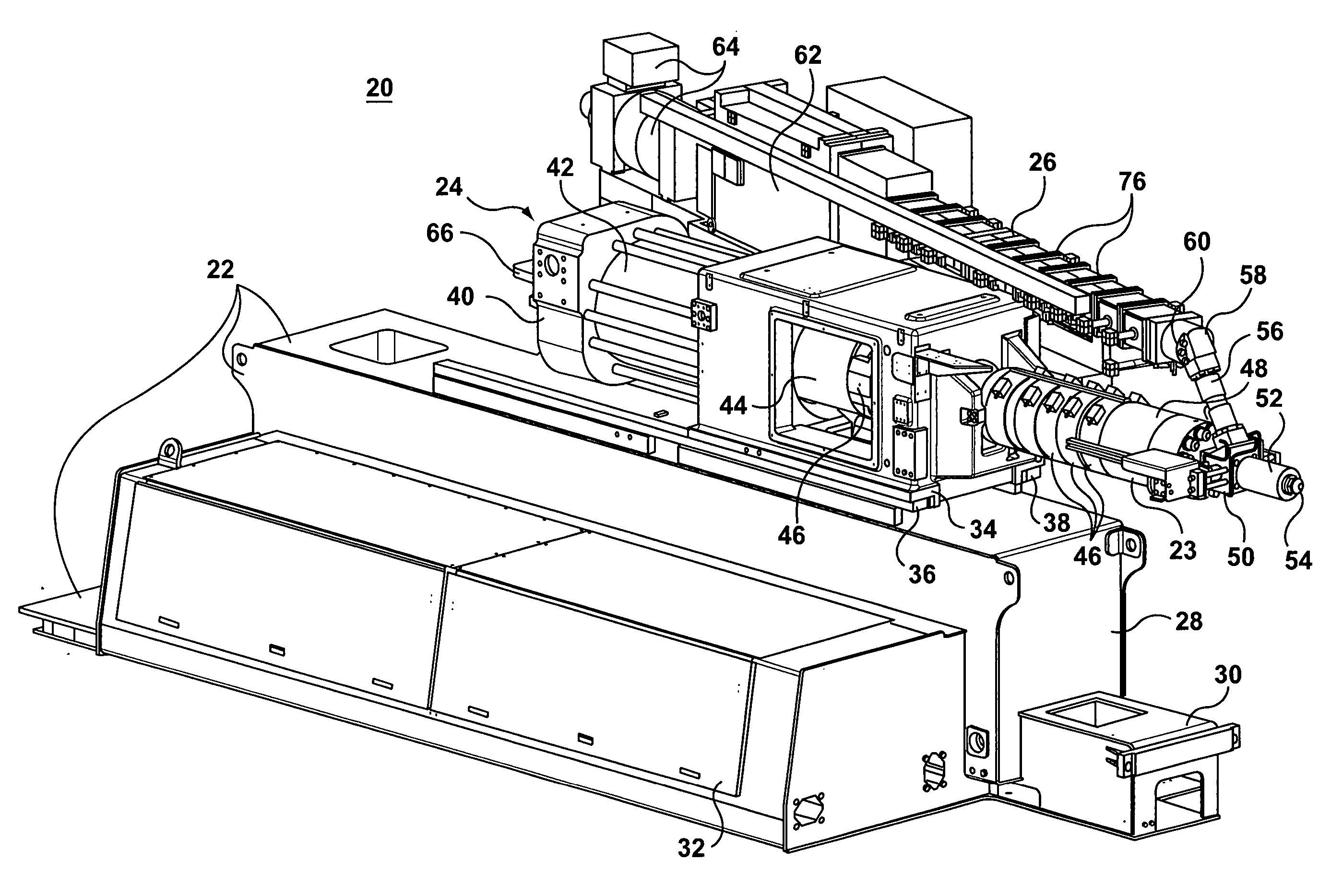Molding machine plasticizing unit sub-assembly and a method of reducing shearing effects in the manufacture of plastic parts
a plasticizing unit and molding machine technology, applied in the field of molding machines, can solve the problems of reducing the inherent physical strength of the molded part, reducing the uniform wall thickness of the finished product, and molten magnesium being somewhat abrasiv
- Summary
- Abstract
- Description
- Claims
- Application Information
AI Technical Summary
Benefits of technology
Problems solved by technology
Method used
Image
Examples
Embodiment Construction
[0047] Referring to FIG. 1, there is shown a graphical representation 10 of flow velocities and related shear rates in a typical channel 12. A velocity (vmax) at a centre of the channel 12 is at a maximum, whereas velocities at sides 14, 16 are minimum. A resultant profile of a curve 18 of flow velocities in a channel therefore follows a generally symmetrical and parabolic form, with angles to tangents at each point on the curve providing a shear rate, γ, that can (for Newtonian fluids) be simplistically represented as: γ=velocity,vchannel height,h
[0048]FIG. 2 is a perspective view of a two-stage injection unit assembly 20 according to a preferred embodiment of the present invention. The injection unit sub-assembly 20 is for an in-line compounding machine, the significant features of which are shown in FIG. 4). Conventionally, a machine base assembly 22 includes a solid frame that supports both a shooting pot sub-assembly 24 (realized by an injection unit and barrel) as well as a...
PUM
| Property | Measurement | Unit |
|---|---|---|
| Length | aaaaa | aaaaa |
| Mass | aaaaa | aaaaa |
| Mass | aaaaa | aaaaa |
Abstract
Description
Claims
Application Information
 Login to View More
Login to View More - R&D
- Intellectual Property
- Life Sciences
- Materials
- Tech Scout
- Unparalleled Data Quality
- Higher Quality Content
- 60% Fewer Hallucinations
Browse by: Latest US Patents, China's latest patents, Technical Efficacy Thesaurus, Application Domain, Technology Topic, Popular Technical Reports.
© 2025 PatSnap. All rights reserved.Legal|Privacy policy|Modern Slavery Act Transparency Statement|Sitemap|About US| Contact US: help@patsnap.com



